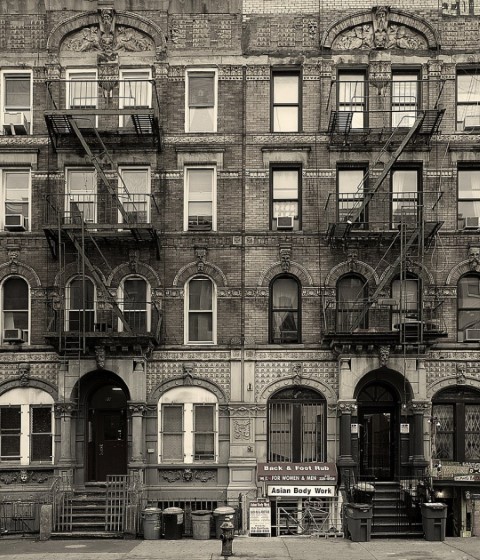Barely five years later, in the mid-nineties, Madrid is too small for him and after a brief stay in London, he will jump to New York where he will remain until shortly after the attacks on the Twin Towers. When we meet again in New York in 1998, we meet in his studio, a former factory at 239 Banker Street, Greenpoint-Williamsbur, in Brooklyn.
"The Banker street studio was kind of a Middle of Nowhere-place: you could see Manhattan, but not hear it, you entered through a Labyrinth of old factory hallways."
We toured the area, at that time it was not yet part of the real estate remodeling processes and it was an area in which one had to know how to move in order not to have problems, we ended up in a den, drinking something at dawn, the night, their movements and its passers are a constant appeal of interest in the work of Reto Halme. In New York, Halme will live for 7 years and will develop and consolidate much of his profile as a photographer. The images of that time reflect the colors of the city, wet, nocturnal, foggy, on the rooftops, in abandoned streets, yellow or greenish-yellow lights, cold blues on the exteriors, and intense reds, interior heat of bodies always of women with the that is crossing.
The series of photographs with models that he takes on the New York subway or in Harlem build places from abandoned spaces, places that make sense of how he reflects the movement of bodies in space. During that time he will be almost obsessed with freezing the movement of the woman's body, moving in his study, exiting a subway staircase at 125 St, going through markets, streets or highways.
"My intention was combine this body with Movement, which you notice, (some models were dancers) but also with mental restlessness, subjects fight to find a non-judgmental view of freedom.
Result leads to trying to capture a psychological porter (mostly inside framework of fashion photography).
Now, when we are kind of touching the limits of our civilization, this becomes actual."
He experiments with the large format and proposes the realization of immense murals, infinite walls of photographs, models, fashion, and the dark city. As a characteristic, his photographs are always in color, they capture time and movement. His work is filled with gloomy sensuality, he applies a kinetic style to it and finishes composing it with the elements of the urban atmosphere of the night.
"In the shoots, you moved, heard music, expressed what you felt. So the situation of shooting almost came more important than the final photos.
Maybe my current blacklight flow Events reflect that, just with no camera at all."
Maybe my current blacklight flow Events reflect that, just with no camera at all."
Which photographers have influenced you? The cinema, actually the cinema, I always remember Lost Highway, from 1997 and directed by David Lynch. Film noir, surreal, road.
After the attack in New York, the city is impregnated with a sad halo, the road is an exit, as the members of the Beat generation, the journey to the west is its exit and it goes to the city of cinema, Los Angeles, where he will spend the next five years. Roads, beaches, the desert, and women will be the instruments with which he will construct his discourse during the following years.
Los Angeles is too small, too small, too monotonous, too individual, it has become too predictable and conventional, and the return to Europe is sung. In 2009 he returned to Madrid for a few years, then Barcelona for a few months and again a jump, this time to Berlin. At the beginning of December 2013, he takes a picture of his car at a gas station, a foggy night escaping from Barcelona to Berlin, 19 hours by car. He has exhibited in all the cities he has been to.
Text by José Juan Barba

















































